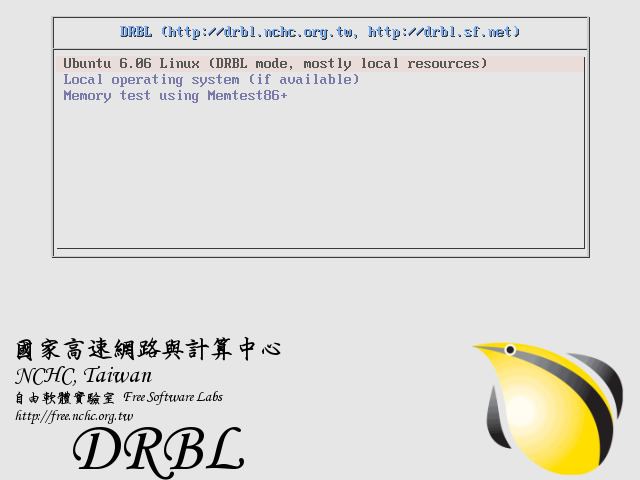Development status Active | Operating system | |
 | ||
Developer(s) NCHC Free Software Labs Initial release April 1, 2004 (2004-04-01) Stable release 2.2.11 / May 31, 2016 (2016-05-31) Type Disk cloning, Disaster recovery, Network boot, PXE boot | ||
DRBL (Diskless Remote Boot in Linux) is a NFS-/NIS server providing a diskless or systemless environment for client machines.
Contents
It could be used for
Providing a DRBL-Server
Installation is possible on a machine with Debian, Ubuntu, Mandriva, Red Hat Linux, Fedora, CentOS or SuSE already installed. Unlike LTSP, it uses distributed hardware resources and makes it possible for clients to fully access local hardware, thus making it feasible to use server machines with less power. It also includes Clonezilla, a partitioning and disk cloning utility similar to Symantec Ghost.
DRBL comes under the terms of the GNU GPL license so providing the user with the ability to customize it.
Features
DRBL excels in two main categories.
Disk Cloning
Clonezilla (packaged with DRBL) uses Partimage to avoid copying free space, and gzip to compress Hard Disk images. The stored image can then be restored to multiple machines simultaneously using multicast packets, thus greatly reducing the time it takes to image large numbers of computers. The DRBL Live CD allows you to do all of this without actually installing anything on any of the machines, by simply booting one machine (the server) from the CD, and PXE booting the rest of the machines.
Hybrid Client
A hybrid client is an excellent way to make use of old hardware. Using old hardware as thin clients is a good solution, but has some disadvantages that a hybrid client can make up for.
DRBL allows one to set up multiple hybrid clients with relative ease.
How it works
The client computer is set to boot from the network card using PXE or Etherboot. The client requests an IP address, and tftp image to boot from, both are provided by the DRBL server. The client boots the initial RAM disk provided by the DRBL server via tftp, and proceeds to mount an nfs share (also provided by the DRBL server) as its root (/) partition. From there, the client boots either the linux distribution on which the DRBL server is installed, Clonezilla, or an installer for various Linux distributions, depending on how that particular client was configured on the DRBL server.
All system resources reside on the local machine except storage, which resides on the DRBL server.
Keys to a successful Hybrid Client environment with DRBL
The main bottleneck in a DRBL installation is between the storage on the DRBL server, and the client workstation. Fast storage on the server (RAID), and a fast network (Gigabit Ethernet), are ideal in this type of environment.
